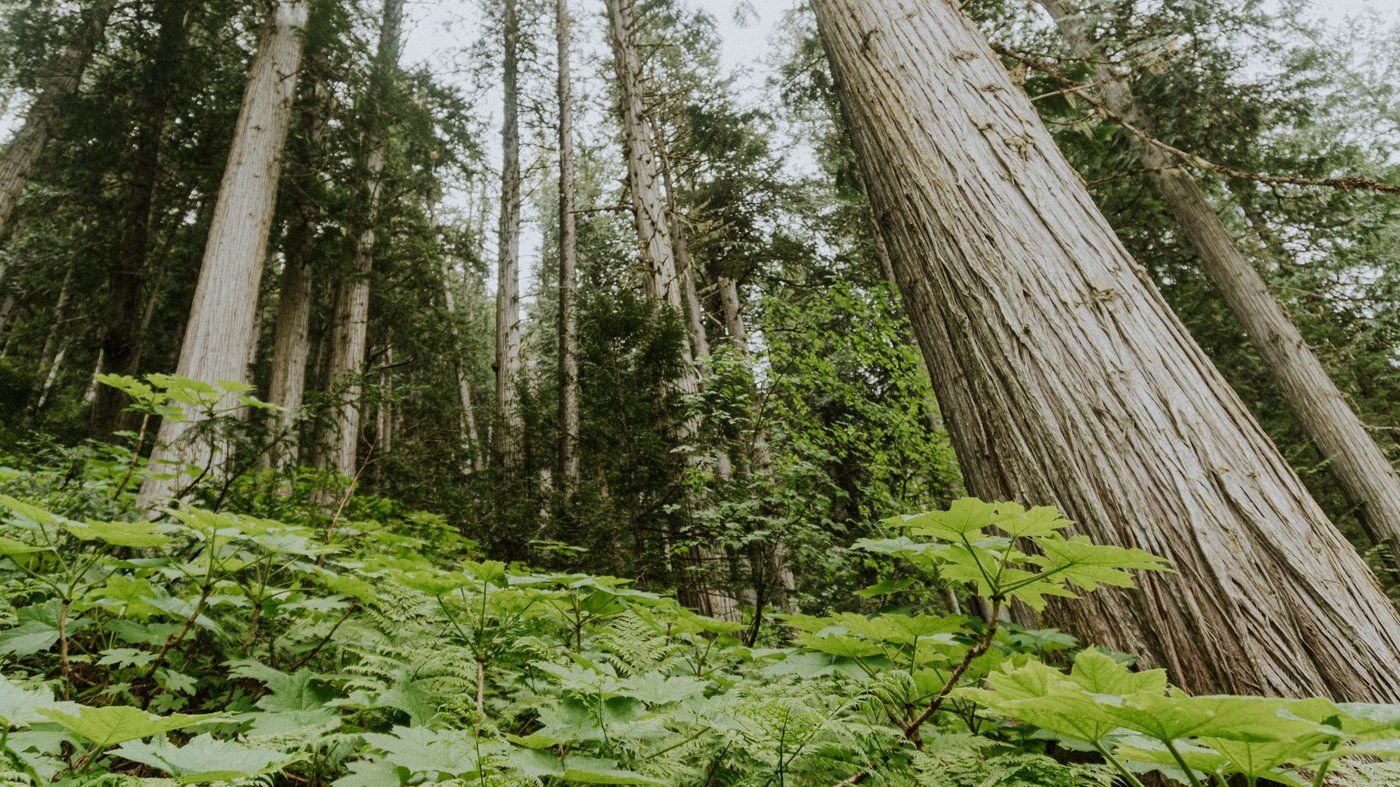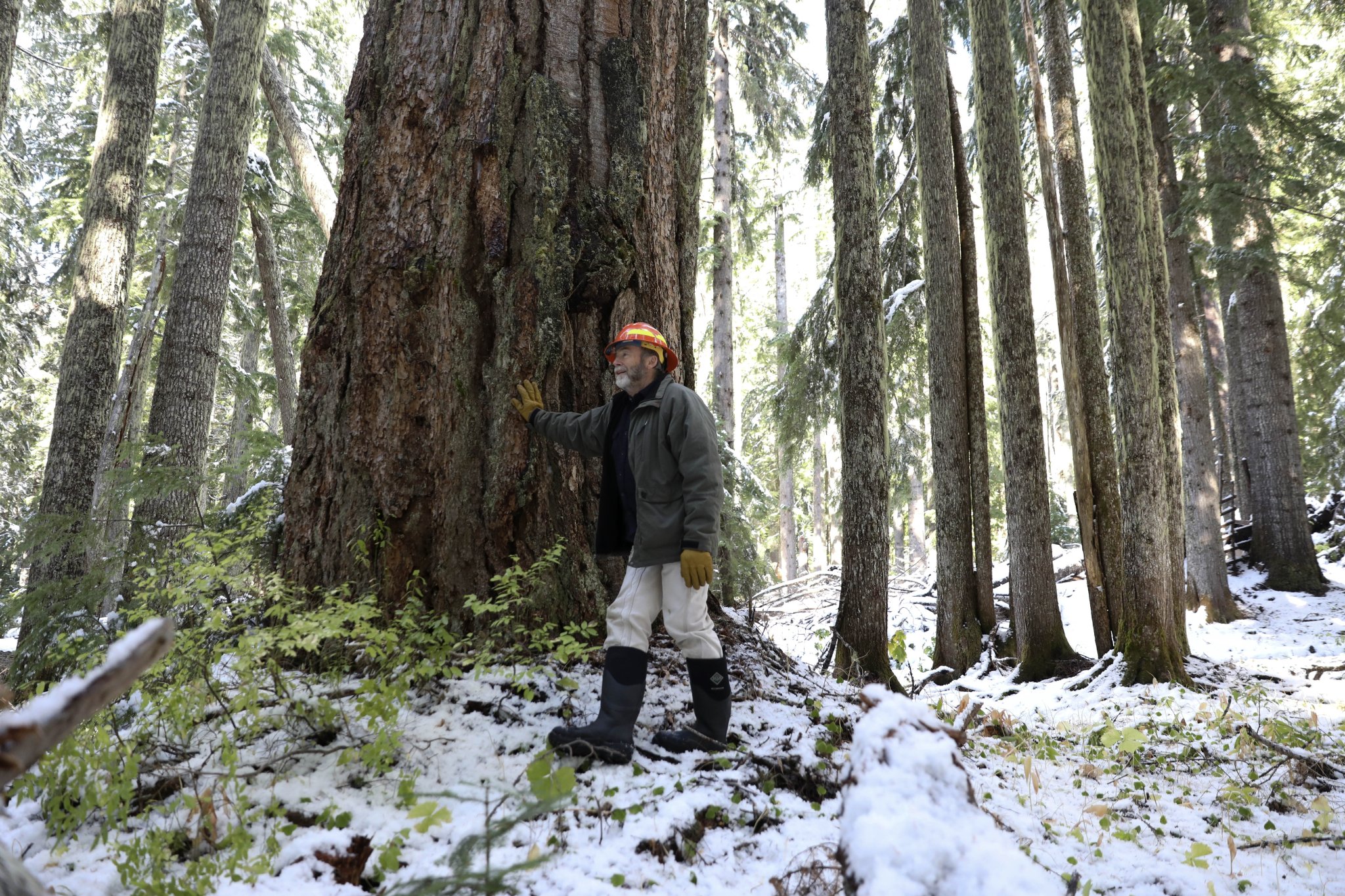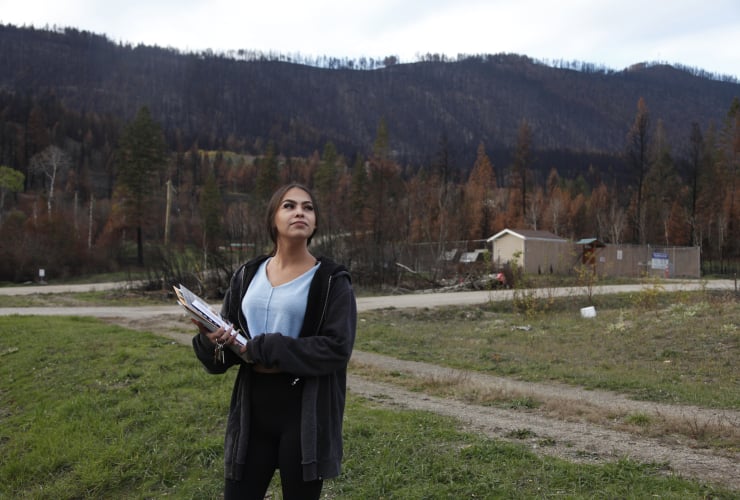After the United States recently pledged to ban old-growth logging, Canadian advocates are hopeful for the future of their own ancient, carbon-storing forests.
President Joe Biden this week announced that, if re-elected, he’d ban logging in old-growth forests by 2025, protecting millions of trees.
The U.S. has about 46.5 million hectares of old-growth or mature forest.
There are pockets of old-growth across Canada, from Cathedral Grove on Vancouver Island, up to the Taiga Plains in the Northwest Territories, and along the Boreal Shield of Ontario, Quebec and Newfoundland.
While national and some provincial data is ambiguous due to differing definitions of old-growth, B.C. alone has more than 11 million hectares.
Old-growth forests are an important front-line defence against global heating. Trees remove planet-heating carbon dioxide from the air as they grow and continue to store it until they die.
Two-thirds of the carbon captured by an old-growth tree is stored in the soil, according to Raymond Plourde, wildlife co-ordinator for the Ecology Action Centre in Halifax.
“If you clear-cut it and expose it to air and water, and especially the desiccating effect of the sun, then that carbon off-gasses over time,” Plourde explained.
Climate advocates are lobbying all levels of government to protect Canada’s old-growth. In May, Liberal MP Patrick Weiler introduced a private member’s motion to end old-growth destruction on all non-Indigenous federal land.
Weiler, who represents West Vancouver-Sunshine Coast-Sea to Sky Country, also proposed ending exports of old-growth logs and products by 2030. Weiler confirmed by email that his motion has yet to be debated in the House, although he said the recent $50-million federal investment in securing 13,000 square kilometres of old-growth achieves some of the goals.

Part of an old-growth deferral area is shown in one of Downie Timber's cut blocks north of Revelstoke, B.C., in this undated handout photo. Photo by Eddie Petryshen
But Ken Wu, executive director of the Endangered Ecosystems Alliance, says there’s “no path to realistically save old-growth in many parts of the country” without buy-in from provincial governments and, in B.C., First Nations.
In some cases, Wu, who co-founded the Ancient Forest Alliance, said provinces can protect old-growth on Crown land by buying out cutting rights from companies with logging licences.
Wu described a “high level of economic dependency” of many First Nations across Canada on forestry. Bands may be “predisposed” to harvest old-growth on their land because they lack the money to go beyond the forest sector and enter other workforces.
Some First Nations need government money and additional “philanthropic funding” to pursue alternative industries, Wu said, while other bands partner with logging companies to ensure they reap the economic benefits of old-growth in their territory.
While this doesn’t always fully protect old-growth, it enables First Nations to protect more or all forest on their land.
“Moving forward, strengthened Indigenous and local leadership on land use planning will help ensure goals for forest health, wildfire resilience and biodiversity are met,” said Linda Coady, president of the BC Council of Forest Industries, in an email.
She sees a “positive path forward,” where healthy old-growth forests, good jobs and strong communities are simultaneously possible.
Advocates for a complete old-growth logging ban face strong opposition from industry representatives, who argue some old-growth logging is necessary to keep the sector viable and point out trees and forests eventually die anyway.
Logging proponents also often insist vast quantities of “decadent old wood” in these forests pose serious fire risks, including John Pineau, executive director of the Ontario Woodlot Association that supports owners of private and community woodlands.
“What people forget is forests ultimately live a futile life and fall over eventually,” Pineau said. “You need to regenerate the forest.”
Old-growth logging is also a decades- or century-old way of life for some, he added, and that won’t change any time soon.
“Where I’m from, there’s families that have been in the forest-harvesting industry for four generations plus,” said Pineau, who hails from near North Bay, Ont. “They want to make sure the forest is always there for them to get their livelihood out of.”
For industry representatives such as John Nester, who manages the Northwest Loggers Association in Terrace, B.C., old-growth wood is a construction staple builders can’t just replace with steel or concrete. Forests can always be grown back anyways, he said.
“We have some of the greatest growing sites in the world,” Nester said, adding that the First Nations his association partners with are also interested in old-growth for jobs and resources. “After 80 years, we can grow it all again, and it creates great biodiversity.”
But Plourde said loggers fail to acknowledge how much carbon old-growth forests store. He dismisses fire risk claims as corporate spin, insisting it comes down to denser hardwood trees being more fire-resistant than evergreen softwood trees.
Plourde fears that more old-growth sites will be cut as they age, especially in provinces like Nova Scotia where most land is privately owned and there is a “very active” forest industry.
Updates and corrections
| Corrections policyThis story has been corrected to better reflect comments from Ken Wu.
Old growth forests will not
Old growth forests will not reproduce themselves after clear cutting. They will be replaced by lesser forests, smaller trees, less diverse trees due to climate change - dryer soil, more destructive wildfires that burn the topsoil leaving rock behind and insect infestations.
The old growth = jobs idea is
The old growth = jobs idea is a false narrative when the carbon cycle and climate change are factored in. What really requires attention is the logging methodology at industrial scales that results in soil damage or loss, either through the concentrated activity with heavy machinery and subsequent dessication from sun exposure and erosion from rain and melting snow.
That equation also ignores the science of forest ecology when pushing high levels of extractive economic models. In the end there will be far more permanent benefits with banning clearcutting and fostering practices that protect continuous forest cover and the conservation of old growth area and riparian stream banks well beyond the standard 30m setback.
120,000 jobs that disappear when unsustainable tree harvesting levels fall off with great da.age to the land vs. 40,000 permanent jobs in healthy working forests and even more in old growth conservation areas for generations. Which one is better?






Comments